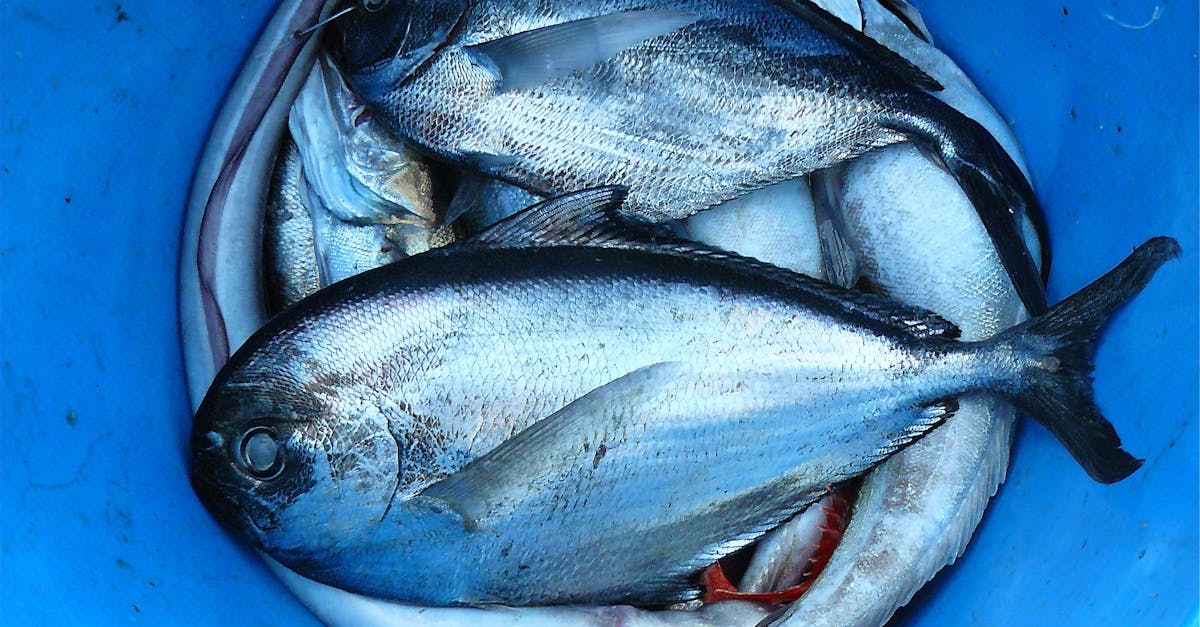Roundup of Popular Low Histamine Saltwater Fish

Mackerel
This oily fish is celebrated for its richness in Omega-3 fatty acids, making it a nutritional powerhouse. These fatty acids support heart health and cognitive function, while also serving to reduce inflammation in the body. Mackerel is not only beneficial for those who prioritise their health but also offers a delicious, bold flavour that many enjoy.
When preparing mackerel, grilling or smoking can elevate its taste while maintaining its nutritional value. Its firm texture holds up well in various recipes, making it a versatile choice for both casual home cooking and sophisticated dining experiences. Mackerel pairs beautifully with vibrant flavours such as citrus or spicy marinades, enhancing its natural richness.
Health Benefits of Mackerel
Mackerel is a powerhouse of nutrition, offering numerous health benefits that contribute to overall well-being. It is particularly renowned for its high omega-3 fatty acid content, which plays a vital role in supporting heart health. Regular consumption of mackerel can help lower blood pressure, reduce triglycerides, and decrease the risk of heart disease. These fatty acids are also beneficial for brain function, potentially aiding in cognitive health and reducing the risk of mental decline as one ages.
In addition to omega-3s, mackerel is an excellent source of essential vitamins and minerals. Rich in vitamin D, it supports bone health and enhances the immune system. This fish also contains significant amounts of vitamin B12, which is crucial for energy production and maintaining healthy nerve cells. Furthermore, mackerel is packed with high-quality protein, necessary for muscle repair and growth, making it an ideal choice for those seeking to maintain a balanced diet.
Plaice
This flatfish, commonly found in the North Atlantic, is celebrated for its delicate flavour and tender texture. Plaice has a light, mildly sweet taste, making it an ideal canvas for various seasonings and cooking methods. Often overlooked in favour of more popular fish, its subtle profile can easily impress discerning palates. Packed with protein and low in fat, it provides a nutritious option for those seeking to maintain a balanced diet.
When it comes to preparing plaice, simplicity often yields the best results. A gentle pan-fry with a bit of butter enhances its natural flavours without overwhelming them. Grilling or baking can also highlight its delicate flesh, and serving it with seasonal vegetables or a sprinkle of fresh herbs elevates the dish further. Given its mild taste, plaice works well with a range of sauces, from light lemon dressings to more robust flavours like caper and parsley.
Cooking Tips for Plaice
This fish can be prepared in various ways to highlight its delicate flavour and flaky texture. Pan-searing is a popular method, as it creates a crispy exterior while keeping the inside tender. Simply season the fillets with salt and pepper, then cook them in a hot skillet with a touch of oil until golden brown on both sides. For a healthier option, baking plaice in the oven with a drizzle of olive oil, lemon juice, and fresh herbs provides a delightful twist.
When it comes to accompaniments, consider light and zesty side dishes to complement the fish. A fresh salad with mixed greens, cherry tomatoes, and a vinaigrette can balance the meal beautifully. For a heartier option, roasted vegetables or a creamy mash can add richness without overpowering the subtle taste of the plaice. Experimenting with flavours such as dill or capers can also elevate the dish, enhancing its overall presentation and taste.
Snapper
This fish has become a favourite among culinary enthusiasts due to its delicate flavour and versatile nature. Its mild, sweet taste pairs well with various ingredients, making it a popular choice for chefs seeking to create balanced dishes. Snapper is rich in protein and nutrients, which adds to its appeal for those prioritising healthy eating.
When it comes to preparation, snapper can be grilled, baked, or used in stews, showcasing its adaptability in different cuisines. Consider complementing it with citrus-based sauces or seasonal vegetables to enhance its natural flavours. This approach not only elevates the dish but also celebrates the fresh, oceanic essence of the fish.
Flavour Profiles and Pairings
Snapper boasts a delicate, sweet flavour with a hint of nuttiness, making it an adaptable ingredient in various dishes. Its firm, white flesh holds up well during cooking, which allows for diverse preparation methods such as grilling, baking, and frying. The mild taste profile pairs beautifully with bright, citrus-based sauces or salsas, highlighting the natural sweetness of the fish while adding an invigorating touch.
When it comes to wine pairings, Sauvignon Blanc and Pinot Grigio complement snapper excellently, enhancing its flavours without overpowering them. For a more adventurous approach, a lightly spiced Asian sauce can bring out a new dimension, while earthy vegetables like asparagus or roasted root crops can provide balance. Such combinations elevate the dish, creating a well-rounded culinary experience that showcases the snapper effectively.
FAQS
What are low histamine saltwater fish?
Low histamine saltwater fish are species of fish that contain lower levels of histamine, making them suitable for individuals who are sensitive to histamines or have histamine intolerance.
Why is mackerel considered a healthy choice?
Mackerel is rich in omega-3 fatty acids, which are beneficial for heart health, reducing inflammation, and supporting brain function.
How can I cook plaice to enhance its flavour?
Plaice can be cooked using various methods, such as pan-frying, baking, or grilling. It's often complemented well with light sauces or herbs to highlight its delicate flavour.
What is the flavour profile of snapper?
Snapper has a mild, sweet flavour with a firm texture, making it versatile for various cooking methods and allowing it to pair well with a variety of spices and marinades.
Are there any other low histamine fish options besides those mentioned?
Yes, other low histamine fish options include sole, haddock, and cod, which are also considered safe for those with histamine sensitivity.
Related Links
Review of the Best Saltwater Fish for Low HistamineHow to Choose Low Histamine Saltwater Fish